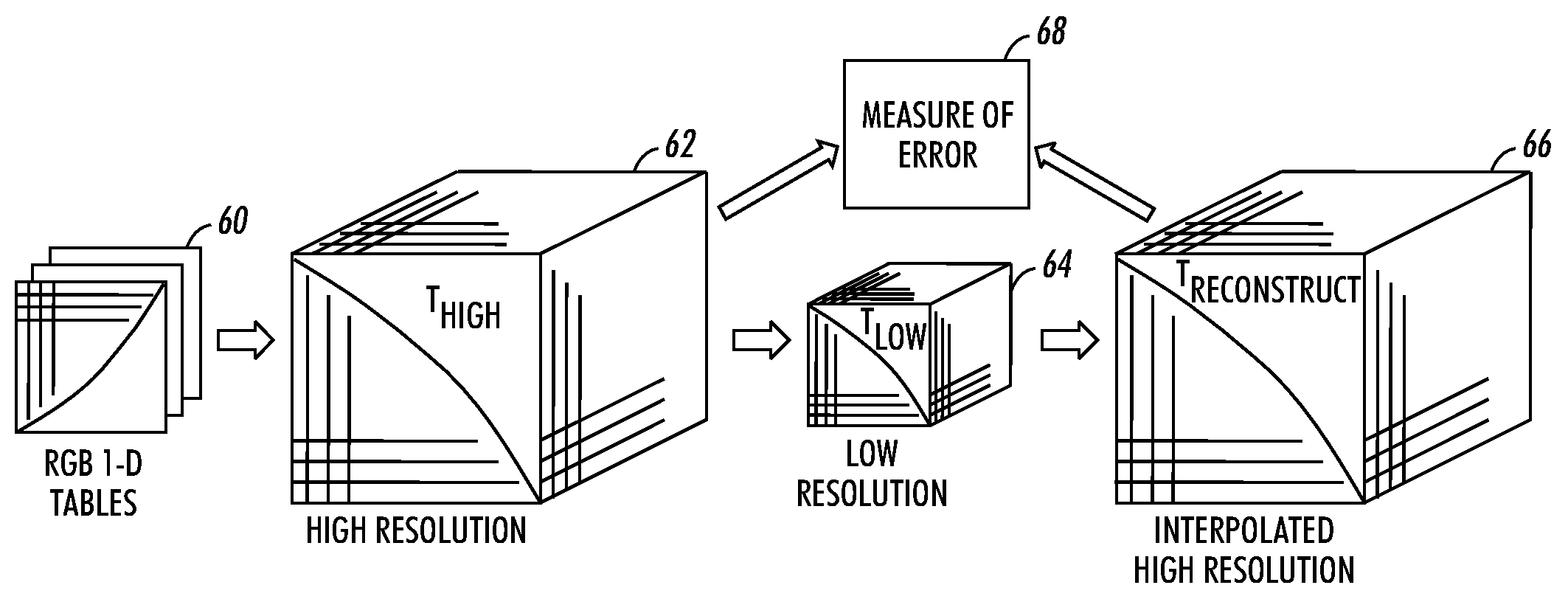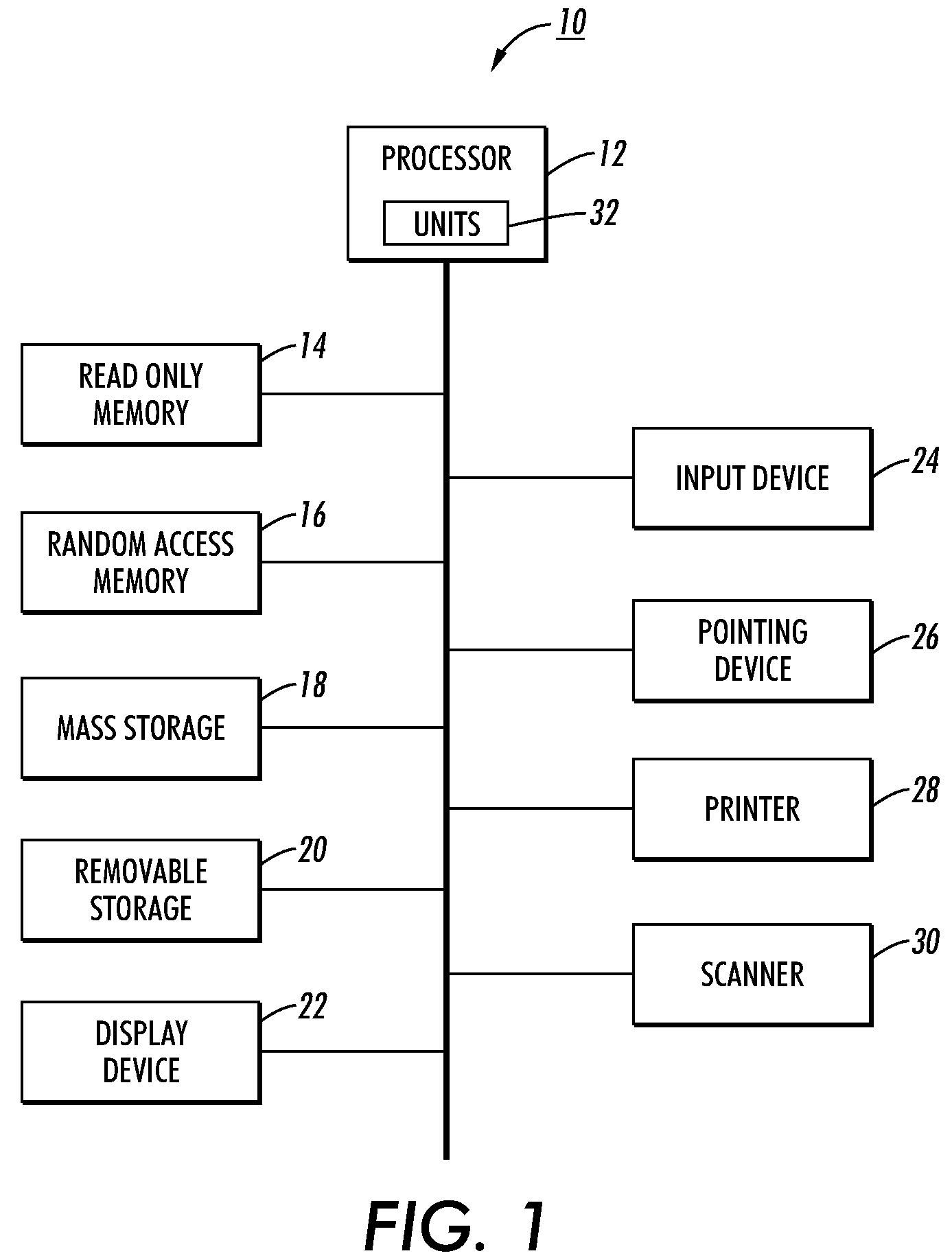Optimal node placement for multi-dimensional profile luts for arbitrary media and halftones using parameterized minimization
- Summary
- Abstract
- Description
- Claims
- Application Information
AI Technical Summary
Benefits of technology
Problems solved by technology
Method used
Image
Examples
Embodiment Construction
[0013]With reference to FIG. 1, a schematic block diagram is shown with an embodiment of a computer system 10 in which the herein-described method of optimal node placement can be utilized. The computer system 10 includes a processor 12, a read-only memory 14, random access memory 16, a data storage device 18 such as, e.g., a disk drive, and a removable data storage device 20 such as, e.g., a CD drive or a DVD drive. The computer system preferably includes a display device 22 such as a color monitor, an input device 24 for a user to enter commands to the computer system, a pointing device 26 such as, e.g., a mouse or trackball for manipulating a graphical user interface or other objects displayed on the display device 22. The computer system 10 may also be connected to a printer 28 and / or a scanner 30. Each of the printer 28 and the scanner 30 may be connected to the computer 10 either locally or by means of a network connection to e.g., a local area network. Processing units 32 acc...
PUM
 Login to View More
Login to View More Abstract
Description
Claims
Application Information
 Login to View More
Login to View More - R&D
- Intellectual Property
- Life Sciences
- Materials
- Tech Scout
- Unparalleled Data Quality
- Higher Quality Content
- 60% Fewer Hallucinations
Browse by: Latest US Patents, China's latest patents, Technical Efficacy Thesaurus, Application Domain, Technology Topic, Popular Technical Reports.
© 2025 PatSnap. All rights reserved.Legal|Privacy policy|Modern Slavery Act Transparency Statement|Sitemap|About US| Contact US: help@patsnap.com



